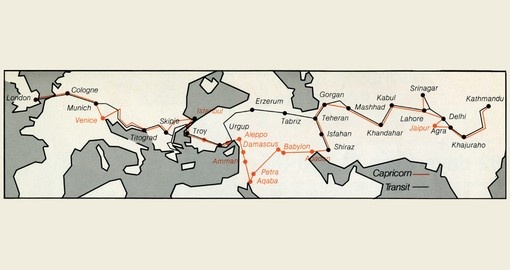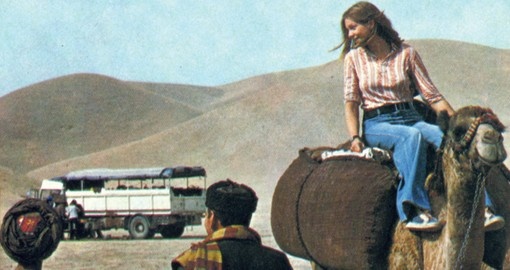The World of Travel in 1970
This is a reprint of an article that appeared in Globetrotting Magazine, Goway's 40th Anniversary edition - Winter 2010.
Also, see "Goway's Early Days" which appeared in the same edition.
In the travel industry, by 1970 airlines had surpassed shipping lines as the dominant trans-ocean people movers following the introduction of jetliners early in the 60s. Within continents, bus travel (e.g. Greyhound) had replaced train journeys as major people movers.
Travel agencies were respectable and necessary businesses in large communities. Usually street level, the older ones still had in their windows, models of ocean liners up to 5 feet long. Usually I.A.T.A. (The International Air Transport Association) would only appoint one travel agency in an area with the privilege to able sell their member airlines. Airlines would provide the agency with their ‘plate’ so they could issue handwritten paper tickets. These chosen agents reported sales monthly and they then had 30 days to pay airlines.
Most agencies were financially successful because they had this exclusivity. They also belonged to another exclusive ‘group’ that sold tickets for ocean liners.
So, in 1970 if you wanted to go travelling, you really had to go to a travel agent.
For a number of years, package holidays (air and hotel included) had been operating in Europe, particularly from Britain to southern Spain. This concept was very new in North America in 1970.
No one was travelling to Asia. The Vietnam War was raging. China was still under Mao Zedong. A visit to Hong Kong was an adventure. In Europe, the Iron Curtain separated the USSR and its Eastern Block European satellites, including East Germany, from Western Europe. Tours into Eastern Europe and Russia had begun, but tourists had to go through a strict visa process and an official guide (e.g. Intourist Guides in Russia) would accompany tourists.
The Middle East was relatively peaceful and overland journeys by bus or truck were actually travelling from Europe through Turkey, Syria, Jordan, Iraq, Afghanistan, Pakistan, Kashmir, and India to Nepal. Some even travelled via Israel.
Kathmandu was the world mecca for travelling hippies.
Apart from a few 4WD jeep and truck expeditions across Africa, tourists were not going to southern Africa. Most overland journeys, if they got through, began or finished in Nairobi.
South America in 1970 was very stable politically when compared to Asia, Africa and Eastern Europe. Because of stereotype stigma, however, only ‘real’ travellers ventured there.
Apart from Europe and North America, there was generally no real international tourism infrastructure in the rest of the world. In Australia for instance, American G.I.s taking R & R leave from the Vietnam War are credited with helping to launch that country’s tourism business.
As always, the winds of change kept blowing and things continued to evolve. Airlines, historically the pride of their respective countries, were usually government owned and propped up by taxpayers. Some of the privileges (like exclusivity on some routes) were starting to end by 1970. Charter flights had arrived.
Rules at the time were that planes could only be chartered by affinity clubs. Most of these clubs had some sort of ethnic connection that developed out of the millions of immigrants that had come to North America after the war. They were still coming and many wanted to go back to see their families (‘VFR’ – Visiting Friends and Relatives - will always be a big motivator for travel).
A new breed of travel agent was also evolving and the establishment referred to them as ‘bucket shops. These did not have the ‘rights’ to sell national airlines or the respected shipping lines but they learned how to sell charter flights and inclusive tour charters (I.T.C.’s or air and land packages, first to Florida and Hawaii and then the Caribbean and Mexico, were beginning to catch on in a big way).
The authorities had great trouble policing the rules of charter flights as more and more people began to travel. Unprofessional and unscrupulous entrants to the travel industry would lead to many airline and bucket shop failures. Governments eventually had to intervene.
In places like Ontario, where Goway is headquartered, all travel sellers in 1974 had to be licensed and conform to strict financial requirements (Ontario is probably the most strict in the world). Taming the Wild West travel world had begun.
The travel industry has changed dramatically since the 70s.
Get a Trip Quote Order a Brochure



















